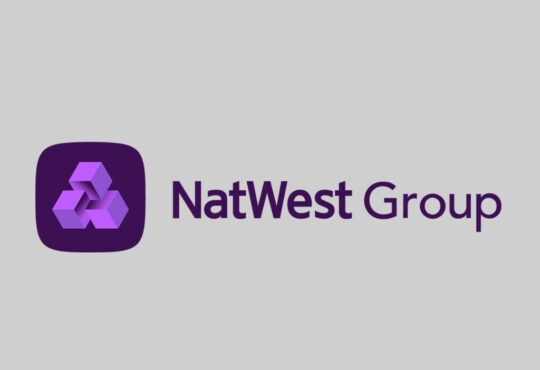You know you need to save money for a rainy day…a family vacation… a big, new TV. But the key question is, how can you make sure you’re on track to meeting your saving goals?
With so much going on in your life and so many competing priorities, it can be difficult to keep your savings goals straight.
A solution is to have multiple savings accounts: One for your emergency fund and one for each big goal.
How many savings accounts should you have?
You can have as many savings accounts as you want, but how many you should have largely depends on your financial goals and the purpose of your savings.
Consider starting with just one savings account for your emergency fund. Aim to have roughly three-to-six months’ worth of expenses saved up in case of unforeseen circumstances like a job loss or medical emergency.
Once you get comfortable with that, add other accounts for each additional savings goal. This can help you determine whether multiple accounts truly helps you save or causes unnecessary stress.
“My rule of thumb is to keep it as simple as it can be without sacrificing what [you] need to get out of it,” said Landon Tan, certified financial planner and founder of Query Capital Financial Guidance in Brooklyn, N.Y.
You don’t want to go overboard. Too many accounts can become its own problem.
“Once you get over five or 10 bank accounts, you start to have trouble keeping track of everything,” said Tan. “This can really hamper efforts to get more visibility on spending.”
To help you decide, consider the following questions:
- What are your short-term and long-term savings goals?
- Are you able to meet the minimum balance requirements for each account?
- Are you willing to put in the time and effort to manage multiple accounts?
- Will having multiple accounts help or hinder your progress toward your savings goals?
Different types of savings accounts
There are several types of savings accounts available, designed for different styles of saving and based on your goals:
- Traditional savings account: One of the most common types of savings accounts offered by banks and credit unions. These accounts usually have low minimum balance requirements, low or no monthly fees, and low interest rates.
- High-yield savings (HYS): Thes interest rates on these accounts are higher than traditional savings accounts, but usually require a higher minimum balance and may come with fees.
- Money market account (MMA): These accounts offer moderate interest rates and the ability to make withdrawals via a debit card or checks. However, you may face minimum balance requirements and, like with all savings accounts, some withdrawal restrictions.
- Certificate of deposit: CDs require savers to deposit a fixed amount of money for a fixed amount of time at a set interest rate. CD yields are generally higher than other savings accounts, but there is a penalty for early withdrawal.
“The best savings account for you is the savings account that’ll help you meet your goals, and make your life a little easier,” said Billy Cho, Manhattan market leader at Citi Financial Services.
How to open another savings account
If you’re opening an additional account, the first step is to research different banks and account options to find the best fit for your needs.
“When looking at different types of savings accounts I recommend considering the account fees, current interest rate of the account and if the account is FDIC insured,” said Eric Scruggs, certified financial planner and founder of Hark Financial Planning.
The Federal Deposit Insurance Corporation (FDIC) and the National Credit Union Administration (NCUA) guarantee up to $250,000 per depositor, per ownership type at every insured bank and covered credit union.
Once you have chosen an account, gather the necessary information and documents to apply. You’ll need to provide basic personal information, including name, date of birth, address and Social Security number (SSN).
Many accounts require a minimum initial balance, so you may also need to have the funds available to deposit once you get approved. This can mean having the routing and account number of the account from which you’re transferring funds or literally having cash on hand if you go in person to a branch.
How to manage multiple bank accounts
If you do decide to have multiple savings accounts, here are some tips to make managing them easier:
- Use automated transfers to consistently contribute to each account.
- Set up alerts to notify you when you reach certain milestones or balances.
- Avoid fees and keep track of any minimum balance requirement.
- Consider consolidating to simplify account management once you meet a goal.
Make sure to revisit your savings strategy every few months to make sure it’s lining up with your goals and overall financial strategy.
Pros and cons of multiple savings accounts
Having multiple savings accounts can be advantageous in a number of ways:
- Focus on multiple goals: You can organize your savings into different categories, making it easier to track your progress and preventing you from dipping into a savings fund for the wrong purpose.
- Maximize rewards: Some banks offer annual bonuses, welcome offers or relationship discounts, so having multiple accounts could maximize the rewards you earn.
- Increase your access: Some accounts limit the number of withdrawals you can make each month; so, having multiple can increase access to your money. Plus, if one account is compromised or frozen, you’ll still have access to your other savings.
While there are a number of benefits to having multiple savings accounts, Cho explained there are also some drawbacks to consider.
- More work: It can take effort and organization to keep track of multiple accounts and potentially make it difficult to decide where to allocate your savings. Some budget apps may help with that.
- Fees and requirements: The more accounts you have, the harder it may be to ensure that you’re meeting the minimum balance requirements for each one. This can lead to unnecessary fees.
- Lower interest: Some banks offer higher interest rates for a larger balance. So, if you spread your savings over multiple accounts, you may earn less in interest.
Frequently asked questions (FAQs)
“If you have trouble saving, start small,” said Lori Gross, financial and investment advisor at Outlook Financial Center in Troy, Ohio. “Have deposits go automatically into the savings, removing the need for you to physically make the deposits, or move funds.”
This will help ensure that you’re consistently putting money into your savings account, even when you’re tempted to spend it elsewhere.
Monthly fees can quickly add up if you have multiple savings accounts. Pay attention to any regular maintenance fees or requirements to waive the fee. It may be worth looking for another bank if you can’t avoid the monthly fee.
Having all of your accounts with one bank is convenient and makes it easy to manage all of your money in one place. But, if your account balances exceed the insurable limit set by the FDIC ($250,000 per person per account) your money may not be safe if your bank fails, according to Eric Roberge, certified financial planner and founder of Beyond Your Hammock, based in Boston.
Spreading out your savings across several banks can help diversify your investments and minimize risk, but can be a hassle to juggle various logins, passwords and management.
Deciding whether to open a joint savings account should be a decision made as a couple and based on your unique circumstances and goals, said Gross. While some couples prefer to keep their finances separate, sharing a joint savings account can be an effective way to achieve financial goals together. But it’s important to approach joint savings carefully and consider your individual financial habits and any potential conflicts that may arise.





